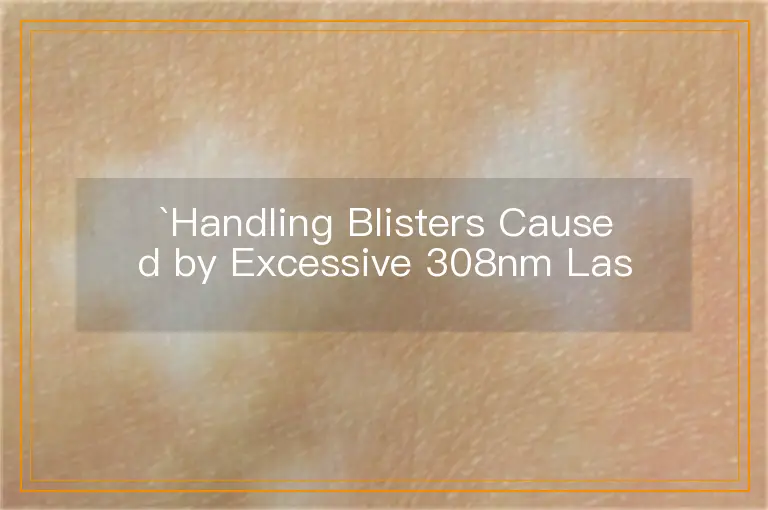Blistering following 308nm laser treatment for vitiligo may occur due to excessive laser dose. Immediate measures include general hygiene and disinfection. Medical treatment, such as topical and oral medications, may be necessary. Long-term management inv。

In the context of vitiligo treatment, the use of 308nm excimer laser therapy is a widely recognized and effective approach. However, occasionally, patients may experience blistering on the treated skin due to excessive laser dose. This phenomenon, although not common, warrants careful management to prevent complications and ensure optimal treatment outcomes. This article delves into the handling of blisters caused by excessive 308nm laser dose on vitiligo patches, providing professional guidance and detailed analysis.
Blistering following 308nm laser treatment for vitiligo is generally attributed to excessive laser energy applied to the skin. This can lead to localized棘层海绵水肿, with inflammatory cell infiltration at the dermo-epidermal junction, ultimately causing the formation of blisters. It may also be indicative of the patient's sensitivity to the laser or inadequate dose adjustment by the physician.
Upon observing blisters, the patient should remain calm and promptly communicate with the treating physician. The following steps can be taken under medical guidance:
In addition to general care, medical treatment may be necessary depending on the severity of the blisters:
To prevent recurrence, the following measures are crucial:
In conclusion, blistering caused by excessive 308nm laser dose on vitiligo patches, while uncommon, requires prompt and professional management. By following the outlined steps and maintaining close communication with the treating physician, patients can ensure optimal treatment outcomes and minimize the risk of complications.